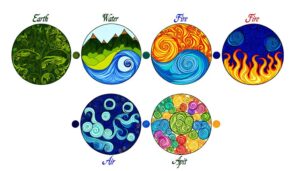What Does a Triangle Symbol Mean Across Cultures?
The triangle symbol, rich in historical and cultural significance, represents stability, divine connection, and essential elements across various societies. In mathematics, it is fundamental, forming the basis of geometry and trigonometry, with notable laws such as the Pythagorean theorem.
Religiously, it embodies the Holy Trinity in Christianity and symbolizes creation and fertility in Hinduism. Artistically, triangles introduce balance and emotional depth, while in architecture, they secure structural integrity and aesthetic appeal.
Their psychological impact varies with orientation, influencing perceptions of stability or tension. Explore further to uncover how triangles shape art, design, and modern applications.
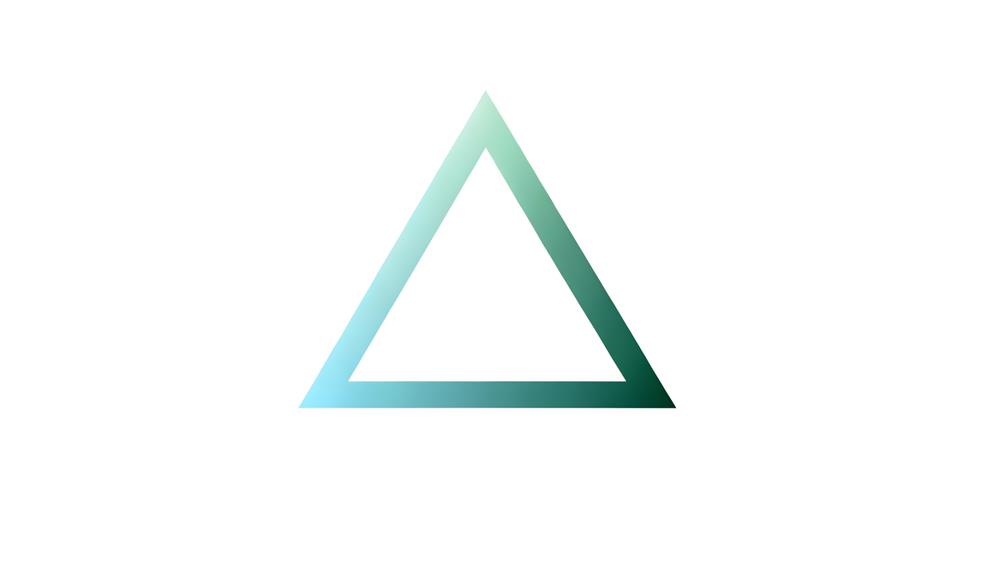
Key Takeaways
- The triangle symbolizes stability, divine connection, and essential elements in various cultures.
- In Christian theology, it represents the Holy Trinity, signifying unity and equality.
- In Hinduism, upward and downward triangles symbolize divine principles and energies.
- Triangles are crucial in geometry and trigonometry, representing fundamental mathematical properties.
- In art and architecture, triangles add stability, strength, and balance to compositions and structures.
Historical Significance

Throughout history, the triangle symbol has held profound significance across various cultures and civilizations, often representing a convergence of ideas, beliefs, and philosophies.
In ancient Egypt, the triangle was emblematic of the pyramids, symbolizing stability and the connection between the earthly domain and the divine.
In Christian theology, the triangle signifies the Holy Trinity—Father, Son, and Holy Spirit—illustrating the unity of three distinct entities in one essence.
Meanwhile, in alchemy, the triangle represents the three primes: salt, sulfur, and mercury, essential components in transforming base metals into gold.
Similarly, in Hinduism, the upward and downward triangles symbolize the masculine and feminine divine principles, respectively.
Each cultural interpretation underscores the triangle's role as a versatile and potent symbol in human thought.
Mathematical Properties
In the field of mathematics, the triangle stands as a fundamental shape whose properties are integral to various branches of geometric theory and applications. The triangle's three sides and three angles create a simple yet profound structure, pivotal in trigonometry, Euclidean geometry, and analytic geometry.
The sum of its interior angles always equals 180 degrees, a principle foundational for solving complex problems. Triangles can be classified by side lengths (equilateral, isosceles, scalene) and angles (acute, right, obtuse).
The Pythagorean theorem for right triangles and the law of sines and cosines for any triangle are essential tools in mathematics and physics. These properties make the triangle a versatile and indispensable element in both theoretical and applied mathematics.
Religious Symbolism
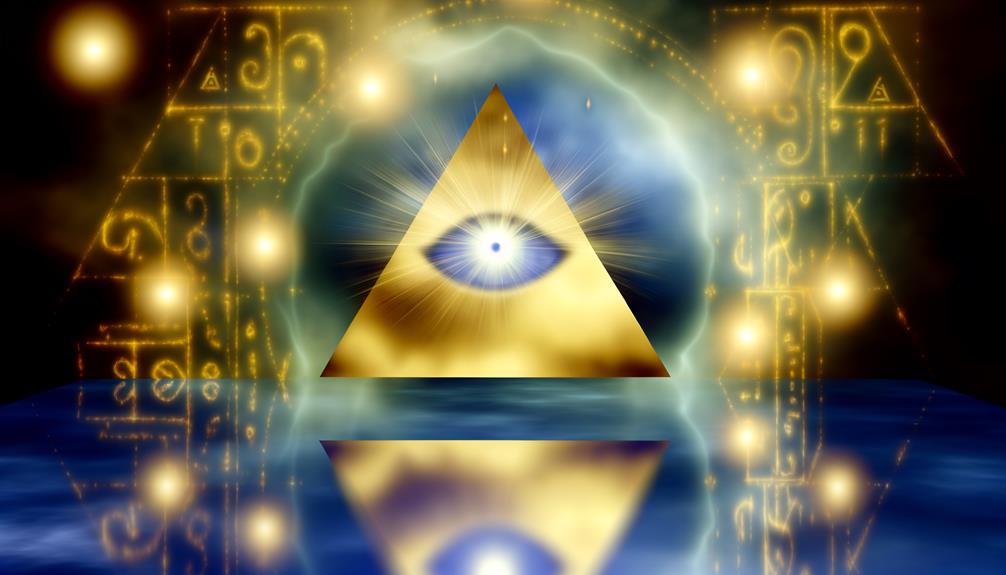
Religious symbolism imbues the triangle with profound spiritual significance, often representing the Holy Trinity in Christian theology, where the three sides denote the Father, Son, and Holy Spirit.
Moreover, the triangle is revered in various traditions as an emblem of the Divine Feminine, symbolizing creation, growth, and spiritual awakening.
Its presence in sacred geometry underscores its role as a foundational shape in the divine architecture of the universe, bridging the material and the transcendent.
Holy Trinity Representation
The triangle, with its three interconnected points, serves as a profound symbol in Christian theology, representing the Holy Trinity—Father, Son, and Holy Spirit—each distinct yet unified fundamentally. This geometric figure encapsulates the concept of three persons in one Godhead, a cornerstone of Christian doctrine.
The equilateral triangle is especially pertinent, as its equal sides and angles symbolize the equality and co-eternity of the Trinity's three persons. Analyzing this symbol, one can discern the intricate balance between individuality and unity, mirroring the theological assertion that each person of the Trinity is fully God, yet there is only one God.
This nuanced representation underscores the complexity and mystery inherent in the Christian understanding of the divine nature.
Divine Feminine Symbolism
While the triangle often symbolizes the Holy Trinity in Christian theology, it also holds significant meanings within the domain of Divine Feminine symbolism, illustrating concepts of creation, fertility, and the nurturing aspects of the universe.
In many ancient cultures, an upward-pointing triangle is associated with male energy and fire, while a downward-pointing triangle represents female energy and water. This alignment underscores the triangle's role in balancing dualities and harmonizing opposites.
Additionally, the downward-pointing triangle is often linked to the womb, symbolizing the sacredness of life and the generative powers of the feminine. This geometric form fosters a deeper appreciation of the interconnectedness and cyclical nature of existence, reflecting the profound influence of the Divine Feminine in shaping spiritual and earthly domains.
Sacred Geometrical Significance
In various religious traditions, the triangle, as a fundamental element of sacred geometry, embodies profound metaphysical principles and cosmic truths. Its three sides are often interpreted to signify the triadic nature of existence, such as the mind-body-spirit connection in spiritual practices.
In Christianity, the triangle represents the Holy Trinity—Father, Son, and Holy Spirit—underscoring unity and divine harmony. Hinduism associates the upward-pointing triangle with Shiva, symbolizing masculine energy, while the downward-pointing triangle represents Shakti, the feminine force.
In Buddhism, the triangle signifies the Three Jewels: Buddha, Dharma, and Sangha. These interpretations reflect the triangle's role in conveying complex spiritual concepts, making it a pivotal icon in the tapestry of religious symbolism.
Cultural Interpretations
The triangle has held significant cultural meanings across various societies. From the ancient Egyptians who associated it with the pyramids and the concept of immortality, to its religious symbolism found in diverse global faiths such as Christianity and Hinduism.
In contemporary contexts, the triangle continues to be a potent symbol. It represents concepts ranging from change and progress to stability and strength. Analyzing these interpretations provides a thorough understanding of how a simple geometric shape can embody complex cultural narratives.
Ancient Egyptian Symbolism
Rooted in the rich tapestry of Ancient Egyptian culture, the triangle symbol often represented the sacred trinity of gods and goddesses, encapsulating concepts of balance, harmony, and cosmic order. This geometric form was a reflection of the interconnectedness between heaven, earth, and the underworld, serving as a conduit for divine communication. The triangle's three points symbolized the triad of deities such as Osiris, Isis, and Horus, embodying the cyclical nature of life, death, and rebirth. The following table elucidates key symbolic aspects:
| Symbolism | Deities Represented | Conceptual Meaning |
|---|---|---|
| Balance | Osiris | Justice and Order |
| Harmony | Isis | Love and Fertility |
| Cosmic Order | Horus | Kingship and Protection |
This triadic representation underscores the profound spirituality of Ancient Egyptian society.
Religious Significance Globally
Across diverse cultures, the triangle symbol has been imbued with profound religious significance, reflecting a myriad of spiritual beliefs and cosmological principles.
In Christianity, the triangle represents the Holy Trinity, encapsulating the unity of Father, Son, and Holy Spirit.
Hinduism regards the upward-pointing triangle as a symbol of masculine energy (Shiva) and the downward-pointing triangle as feminine energy (Shakti), their union symbolizing balance and creation.
In Buddhism, the triangle often signifies the three jewels: the Buddha, the Dharma (teachings), and the Sangha (community).
Native American spirituality interprets the triangle as a representation of the connection between earth, sky, and humanity.
Each cultural context endows the triangle with layers of meaning that transcend mere geometric abstraction.
Modern Cultural Uses
In contemporary culture, the triangle symbol continues to hold significant meaning. It manifests in various forms such as fashion, art, and architecture. Here, it often represents concepts of stability, innovation, and interconnectedness. This geometric shape, with its three sides and angles, is seen as a unifying element that bridges ancient symbolism with modern interpretations.
- Fashion: Triangles are utilized in designs to convey balance and forward-thinking aesthetics.
- Art: The shape is frequently employed to symbolize creativity and dynamic movement.
- Architecture: Triangular structures are associated with structural integrity and modernity.
- Technology: Triangles often represent change and progression in tech logos and design.
- Spiritual Practices: In contemporary spirituality, triangles symbolize enlightenment and higher consciousness.
These diverse applications highlight the triangle's enduring and evolving significance.
Triangles in Art
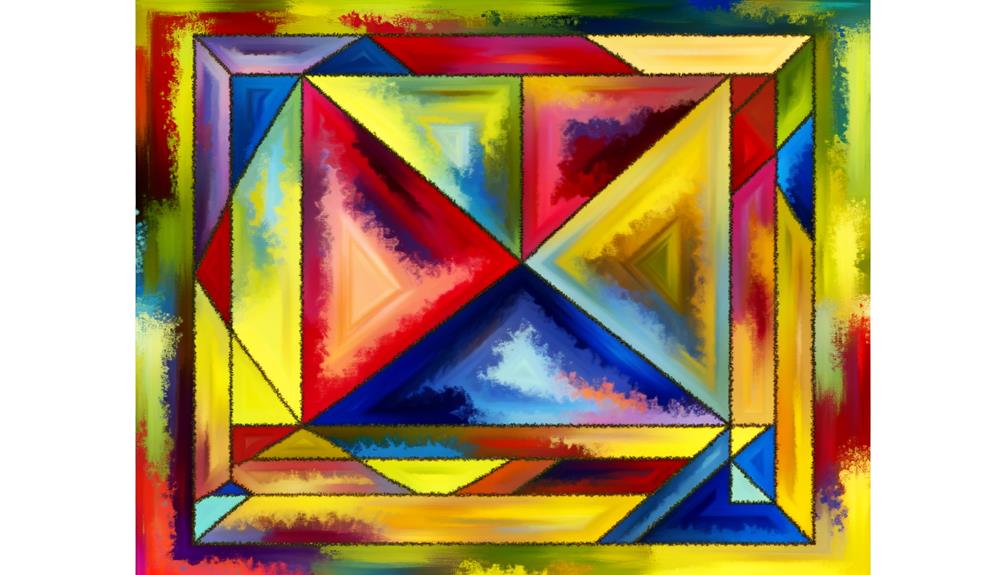
The triangle, often employed by artists for its geometric clarity and symbolic depth, serves as a powerful visual element that conveys a multitude of meanings in various artistic contexts.
In Renaissance art, triangles frequently represent the Holy Trinity, underscoring themes of divinity and unity.
Modern artists like Wassily Kandinsky have explored triangles to evoke emotions and spiritual experiences, associating different angles and orientations with distinct feelings.
The triangular composition, or pyramid structure, in paintings creates a sense of stability and directs the viewer's gaze, as seen in Leonardo da Vinci's 'The Last Supper.'
The triangle's versatility allows it to function both as a structural framework and as a symbol of balance, conflict, and transcendence in artistic expression.
Triangles in Architecture
Utilized extensively in architectural design, triangles are fundamental elements that provide structural integrity, aesthetic appeal, and symbolic significance. Their inherent geometric properties allow for efficient load distribution, making them indispensable in various architectural applications. Triangles are used in trusses, roofs, and bridges due to their ability to withstand substantial forces without compromising stability.
- Structural Integrity: Triangles distribute weight evenly, reducing stress on individual components.
- Aesthetic Appeal: Triangular shapes add visual interest and dynamic lines to architectural designs.
- Symbolism: Triangles often symbolize strength and resilience in architectural contexts.
- Versatility: Their simple yet robust form can be adapted to various design requirements and styles.
- Efficiency: Triangular configurations maximize material usage, ensuring economic and sustainable construction.
Psychological Impact

Beyond their structural and aesthetic roles in architecture, triangles also wield significant psychological impact, influencing human perception and emotional response through their geometric simplicity and symbolic associations. Triangles evoke a range of emotions and thoughts depending on their orientation and context.
| Triangle Orientation | Psychological Impact | Symbolic Associations |
|---|---|---|
| Upward | Stability, Balance | Ascension, Strength |
| Downward | Instability, Uncertainty | Yielding, Danger |
| Equilateral | Harmony, Equality | Perfection, Unity |
| Asymmetrical | Tension, Dynamism | Conflict, Change |
The upward triangle is perceived as stable and strong, while the downward triangle often suggests instability. Equilateral triangles symbolize harmony and equality, whereas asymmetrical triangles can evoke dynamism and tension. These associations shape human emotional and cognitive responses, illustrating the profound psychological influence of triangular forms.
Triangles in Design
Incorporating triangles into design can profoundly influence both the aesthetics and functionality of a project, leveraging their geometric properties to create visually compelling and structurally sound compositions. Triangles offer unique advantages due to their inherent stability and symmetry.
Their sharp angles can guide the viewer's eye, creating a dynamic sense of movement and direction. Additionally, triangles can be utilized to break up monotonous designs, adding visual interest and complexity. This geometric shape is versatile, suitable for both minimalistic and intricate design approaches.
- Structural Integrity: Triangles are often used in architectural frameworks for their strength.
- Visual Hierarchy: They can direct attention and establish focal points.
- Dynamic Movement: Triangles convey energy and progression.
- Symmetry: They balance designs through uniformity.
- Versatility: Adaptable to various design styles and elements.
Modern Uses
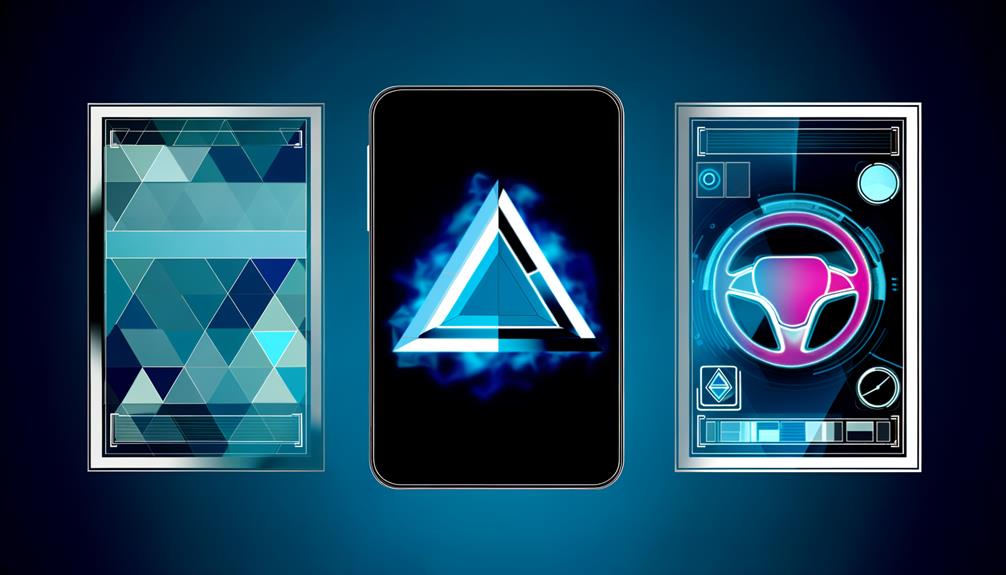
How have modern applications harnessed the versatility of triangles to innovate in areas ranging from architecture to digital design?
In architecture, triangles form the basis of structural integrity, distributing weight evenly and providing unparalleled stability, as seen in truss bridges and geodesic domes.
In digital design, triangles are pivotal in computer graphics, where complex 3D models are constructed from triangular meshes, enabling realistic rendering and animation. Additionally, the triangle's symbolic simplicity and directional cues are indispensable in user interface design, guiding users intuitively.
In renewable energy, triangular configurations of solar panels optimize space and efficiency.
These examples underscore how the geometric elegance of triangles continues to drive advancements, merging aesthetic appeal with functional efficacy.
Conclusion
The triangle symbol, deeply rooted in history and culture, embodies a myriad of meanings across various disciplines. From mathematical precision to religious and artistic expressions, its versatility is undeniable.
In architecture and design, triangles provide both aesthetic appeal and structural integrity. Their psychological impact further underscores their significance in human consciousness.
Essentially, triangles are a 'jack of all trades,' seamlessly integrating into multiple facets of life, reflecting complexity and simplicity in equal measure.




